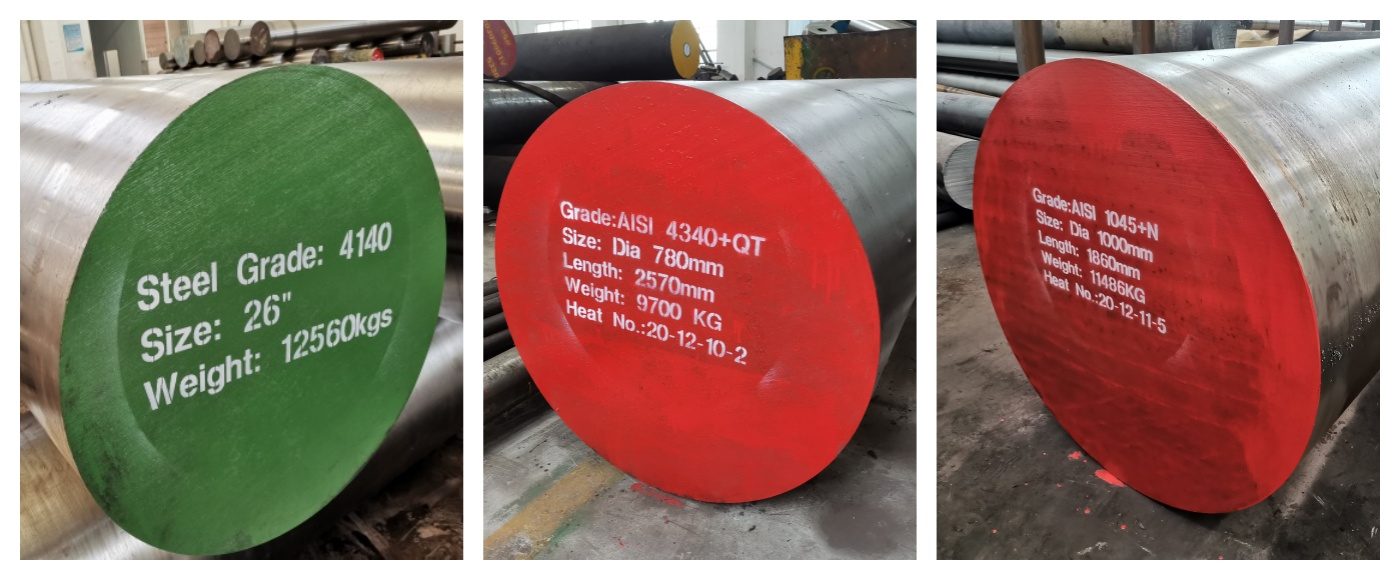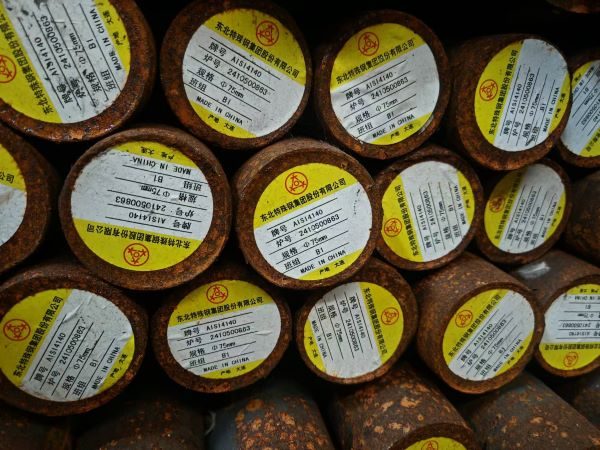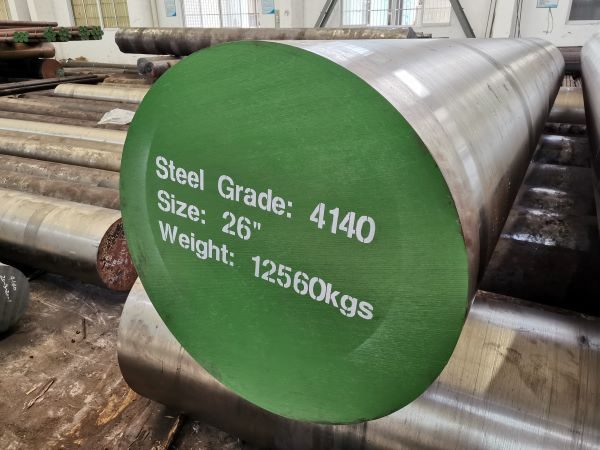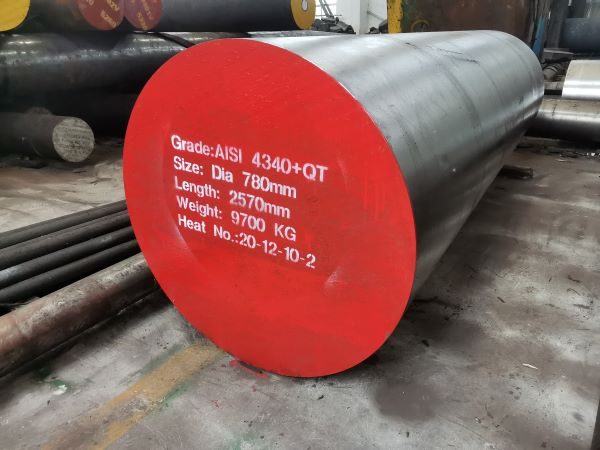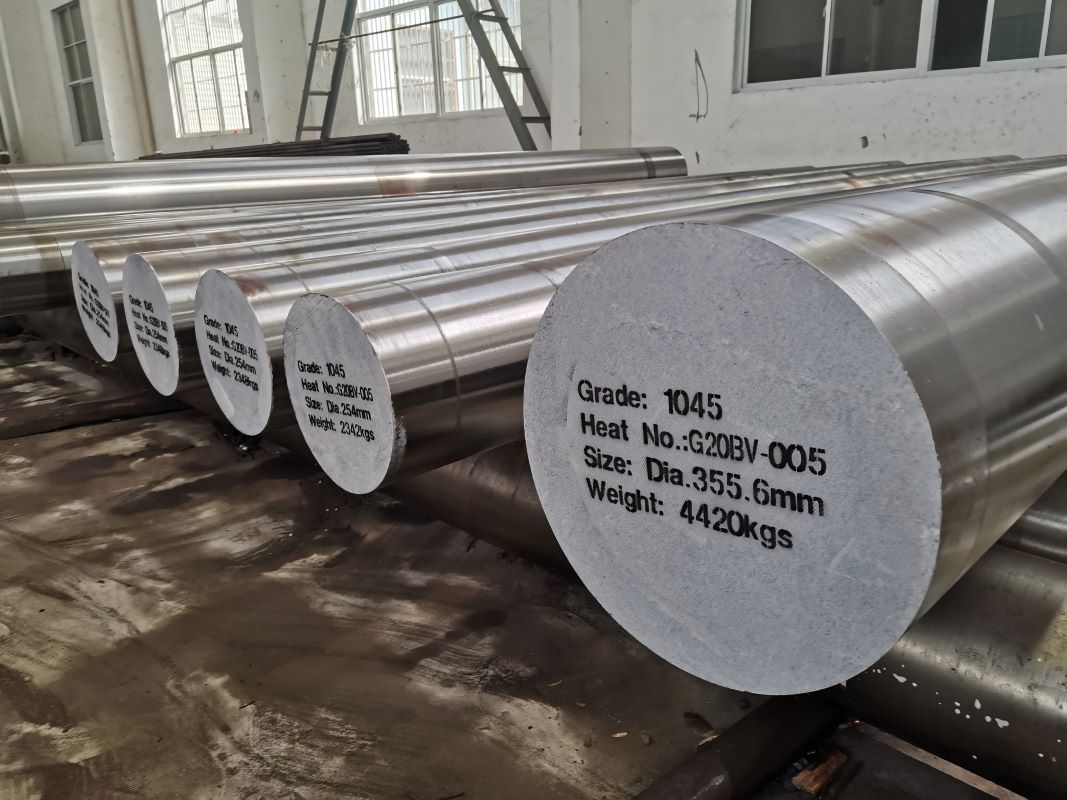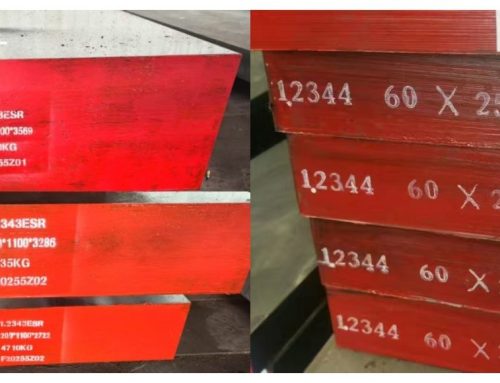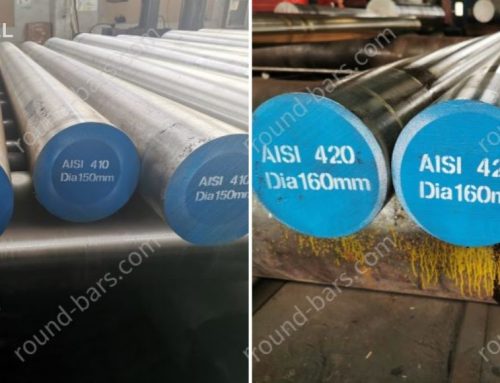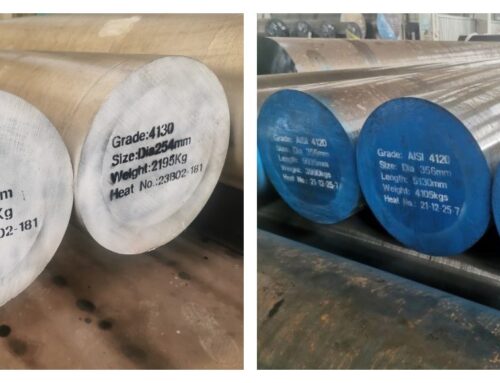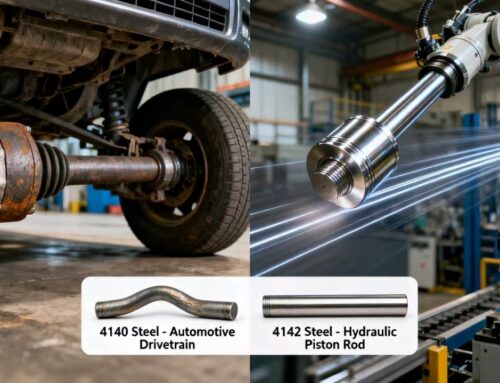In the fields of machinery manufacturing, automotive parts, and energy equipment, 4140, 4340, and 1045 steels are three widely used structural steels. They may seem similar, but they differ significantly in performance, cost, and application scenarios. Choosing the wrong material may lead to premature equipment failure, a surge in repair costs, or unnecessary material waste. This article will compare the core parameters of these three types of steel and provide a clear selection guide.
Overview of The Core Differences Between 4140, 4340, and 1045
- 1045 steel: Medium carbon steel (C ~ 0.45%). This represents basic carbon steel, offering the lowest cost, the lowest strength, hardness, and hardenability, and relatively the best weldability (although medium carbon steel still requires preheating and careful welding). 1045 steel has average toughness, relying on carbon and a small amount of manganese for its basic properties.
- 4140 steel: Medium-carbon low-alloy steel (C ~ 0.40%) containing chromium and molybdenum. A representative of the chromium-molybdenum steels. 4140 offers significantly higher strength and hardness than 1045, significantly improved hardenability (due to a greater effective cross-section thickness), and improved toughness (especially in the quenched and tempered condition). It also offers better high-temperature resistance and wear resistance than 1045, but costs more.
- 4340 steel: A medium-carbon alloy steel (C ~ 0.40%), 4340 is a representative of the nickel-chromium-molybdenum steels, based on 4140 with the addition of nickel (the most expensive of the three). 4340 has the highest strength, toughness (especially low-temperature toughness), and hardenability of the three. However, it is more susceptible to notch sensitivity and temper brittleness.
4140 4340 and 1045 Depth Comparison Table
| Characteristic | AISI/SAE 1045 | AISI/SAE 4140 | AISI/SAE 4340 |
| Category | Medium Carbon Steel | Medium Carbon Low Alloy Steel (Chromium-Moly Steel) | Medium Carbon Alloy Steel (Nickel-Chromium-Moly Steel) |
| Key Difference Analysis | 1045 is the basic carbon steel; 4140 is the mainstream chromium-molybdenum steel; 4340 is a high-performance alloy steel with added nickel. | ||
| Main Chemical Elements (%) | C: 0.43-0.50 Mn: 0.60-0.90 Si: 0.15-0.35 | C: 0.38-0.43 Mn: 0.75-1.00 Cr: 0.80-1.10 Mo: 0.15-0.25 Si: 0.15-0.35 | C: 0.38-0.43 Mn: 0.6-0.8 Ni: 1.65-2.00 Cr: 0.70-0.90 Mo: 0.20-0.30 Si: 0.15-0.35 |
| Key Difference Analysis | Nickel (Ni) is the key element that distinguishes 4340 from 4140, significantly improving toughness and hardenability. Chromium (Cr) and molybdenum (Mo) in 4140 significantly enhance its performance. 1045 relies almost exclusively on carbon (C) and manganese (Mn). | ||
| Typical Heat Treatment State | Hot rolled/cold drawn (HR/CR),Normalized (N),Quenched & Tempered (QT) | Annealed(A),Normalized (N), Quenched &Tempered(QT - Main Application State) | Annealed(A),Normalized (N), Quenched & Tempered(QT - Main Application State),Austempering |
| Key Difference Analysis | The main value of 4140 and 4340 lies in the quenched and tempered (QT) state, which provides the best combination of strength and toughness. 1045 has limited quenching and tempering effects and is often used in the normalized or hot-rolled state. | ||
| Characteristic | AISI/SAE 1045 | AISI/SAE 4140 | AISI/SAE 4340 |
| Typical mechanical properties (quenched and tempered) | |||
| Tensile strength (MPa) | 570-700(hot rolled/normalized) 700-850(quenched and tempered) | 850-1000 (typical QT) 1000-1200+ (high-strength QT) | 930-1080 (typical QT) 1080-1400+ (high-strength QT) 1500-2000+ (Austempered/secondary hardened) |
| Key Difference Analysis | Strength potential: 4340 ≥ 4140 > 1045. The upper limit of 4340 is higher under high-strength QT, and ultra-high strength can be achieved through special processes. | ||
| Yield strength (MPa) | 310 (hot rolled) 450 (normalized)550-700 (quenched and tempered) | 650-800 (typical QT) 800-1000+ (high-strength QT) | 700-900 (typical QT) 900-1200+ (high-strength QT) 1300-1800+ (austempered/secondary hardened) |
| Key Difference Analysis | Yield strength potential: 4340 ≥ 4140 > 1045. Consistent with the trend of tensile strength. | ||
| Elongation (%) | 12-20 (hot rolled/normalized) 10-15 (quenched and tempered) | 15-20 (typical QT) 12-16 (high-strength QT) | 15-22 (typical QT) 12-18 (high-strength QT) 8-12 (ultra-high-strength) |
| Key Difference Analysis | At the same strength level, 4340 generally has better ductility due to the toughening effect of nickel. 1045 has acceptable ductility at lower strength. | ||
| Area reduction (%) | 35-50 (hot rolled/normalized) 30-45 (quenched and tempered) | 45-60 (typical QT) 40-50 (high-strength QT) | 50-65 (typical QT) 45-55 (high-strength QT) 30-45 (ultra-high-strength) |
| Key Difference Analysis | Toughness (especially impact toughness) trend: 4340 > 4140 > 1045 (especially in the QT state and at low temperatures). Reduction of area shows a similar trend. | ||
| Hardness (HB) | 170-210 (hot rolled) 180-220 (normalized) 200-300 (quenched and tempered) | 280-320 (typical QT) 300-400 (high-strength QT) | 280-320 (typical QT) 350-450 (high-strength QT) 45-55 HRC (≈450-550 HB) (ultra-high-strength) |
| Key Difference Analysis | Hardness potential: 4340 ≥ 4140 > 1045. Directly related to strength. | ||
| Toughness | |||
| Impact toughness (room temperature) | Medium | Good | Excellent |
| Key Difference Analysis | The nickel in 4340 significantly improves toughness, especially suppressing low-temperature brittleness. 4140 is more ductile than 1045. | ||
| Low temperature toughness | Poor | Fair | Good |
| Key Difference Analysis | 4340 is the most suitable choice among the three for low temperature or shock load environments. | ||
| Characteristic | AISI/SAE 1045 | AISI/SAE 4140 | AISI/SAE 4340 |
| Fatigue strength | Medium | Good | Excellent |
| Key Difference Analysis | 4340 > 4140 > 1045. The combination of high strength and good toughness results in excellent fatigue resistance. | ||
| Wear resistance | Medium | Good | Good |
| Key Difference Analysis | Mainly depends on the hardness. At the same hardness, the wear resistance is similar. 4140/4340 is easier to achieve high hardness. | ||
| Hardenability (Jominy end quenching distance) | Very low (effective hardening depth is small, usually <12mm) | Medium-high (Significantly superior to 1045, effective cross-section up to 75-100mm) | Extremely high (The highest of the three, with an effective cross-section of 150mm+) |
| Key Difference Analysis | 4340 > 4140 >> 1045. Alloying elements (especially Mo, Cr, Ni) greatly suppress the pearlite/bainite transformation, allowing a larger cross section to be hardened to martensite. | ||
| Machinability | Excellent (annealed/hot rolled) | Good (annealed) | Fair(annealed) |
| Key Difference Analysis | 1045 > 4140 > 4340. Carbon steel is the easiest to machine. Alloying elements increase work hardening tendency and tool wear. | ||
| Weldability | Fair (needs preheating and postheating) | Poor (requires strict preheating and post-heating/post-weld heat treatment) | Very poor (requires very strict preheating, post-heating and post-weld heat treatment) |
| Key Difference Analysis | 1045 > 4140 > 4340. Medium carbon + alloying elements significantly increase the tendency to cold cracking and heat-affected zone embrittlement. 4340 is the most difficult to weld due to its high hardenability and Ni/Cr content. | ||
| Corrosion resistance | Poor (easy to rust) | Slightly better than 1045 (Cr provides slight passivation) | Slightly better than 1045 (Cr provides slight passivation) |
| Key Difference Analysis | All three are not stainless steel and have poor corrosion resistance. Cr provides a slight improvement, but is far inferior to stainless steel. Surface protection is required. | ||
| High temperature performance | Poor (softens quickly) | Good (Mo improves creep/relaxation resistance) | Good (Mo improves creep/relaxation resistance) |
| Key Difference Analysis | 4140/4340 > 1045. Molybdenum (Mo) significantly improves high-temperature strength and creep resistance. 4340 is slightly better. | ||
| Characteristic | AISI/SAE 1045 | AISI/SAE 4140 | AISI/SAE 4340 |
| Cost | Lowest | Medium | Highest |
| Key Difference Analysis | 1045 < 4140 < 4340. Cost differences are primarily determined by alloying element content (especially Ni) and processing/heat treatment requirements. | ||
| Main application areas (examples) | Shafts (low stress), gears (low load), bolts, pins, chain links, structural parts, forgings (general purpose) | High-strength shafts, gears (automobiles/general machinery), connecting rods, bolts (high-strength), wrenches, drill collars, oil equipment parts, mold inserts | Aircraft landing gear, crankshafts (high performance), connecting rods (racing/aviation), helicopter rotor components, heavy gears, high-strength fasteners, mold mandrels, nuclear reactor parts, armor plates |
| Key Difference Analysis | 1045: Cost-sensitive, general-purpose structural parts with low performance requirements. 4140: The most widely used chromium-molybdenum steel, offering a balance of strength, toughness, cost, and processability. 4340: High-end or critical applications requiring extremely high strength, excellent toughness (especially at low temperatures and impact), and high hardenability. |
||
| Key Advantages | Low cost, easy to obtain, easy to process, good weldability (relatively) | High strength, good toughness, high hardenability, good high temperature performance, excellent comprehensive performance and cost-effectiveness | Top strength-toughness combination, extremely high hardenability, excellent fatigue and low temperature properties |
| Key Difference Analysis | 4140 is the "workhorse" alloy steel. 4340 is the "high-end" choice, offering excellent performance but with high cost/processing requirements. 1045 is the economical, foundational choice. | ||
| Main shortcomings | Low strength, low hardenability, average toughness, poor corrosion resistance | The cost is higher than carbon steel, welding needs to be cautious, and heat treatment is required to maximize performance. | High cost, extremely difficult and expensive to weld, sensitive to notches, prone to temper brittleness (needs rapid cooling) |
| Key Difference Analysis | The use of 4340 requires special attention to welding process and temper brittleness control. 1045 is not suitable for key parts requiring high strength or large cross-section. | ||
Summary and Material Selection Recommendations:
- For lowest cost, ease of processing, and low performance requirements: Choose 1045. Suitable for general-purpose structural parts and fasteners not subject to high stress, impact, or wear.
- For a good balance of strength, toughness, and hardenability, and considering cost-effectiveness: Choose 4140. This is the most versatile and widely used high-strength alloy structural steel, suitable for most mechanical parts requiring reliable performance (shafts, gears, connecting rods, tools, etc.).
- For top-tier performance requirements: extremely high strength (especially in large sections), extremely high toughness (especially at low temperatures or under impact), extremely high fatigue strength, and maximum hardenability: Choose 4340. Suitable for critical load-bearing components in aviation, aerospace, racing, high-end equipment, and heavy machinery. However, you must accept its high cost, difficulty in welding, and stringent processing requirements (heat treatment and machining). Be mindful of temper brittleness (typically requiring rapid cooling after tempering in the 350-575°C range).
Key Points:
- The Role of Nickel (Ni): The core advantage of 4340 over 4140 lies in its addition. Nickel significantly increases the steel’s toughness (especially low-temperature toughness), improves hardenability, and slightly increases strength. This makes 4340 the preferred choice for applications subject to high impact loads, low temperatures, or where fatigue life is extremely critical.
- Hardenability is a key differentiator: 1045 is virtually incapable of effectively hardening large cross-sections. 4140 can handle medium to large cross-sections. 4340 can harden very large cross-sections, which is crucial for large forgings and parts.
- The Core Role of Heat Treatment: The superior performance of 4140 and 4340 depends entirely on the correct quenching and tempering (quenching and tempering) heat treatment. When purchasing or specifying material, it is important to clearly define the heat treatment (e.g., required hardness or strength range). While 1045 can be heat-treated, the improvement is limited, and its poor hardenability limits its applications.
- Decreasing Weldability: As the carbon equivalent and alloy content increase, the difficulty and risk of welding increase dramatically. Welding 4140 and 4340 requires specialized knowledge, rigorous procedures, and post-weld heat treatment.
The choice of steel ultimately depends on the specific application requirements (loads, environment, size, life), cost budget, and fabrication capabilities (heat treatment, welding, machining).
